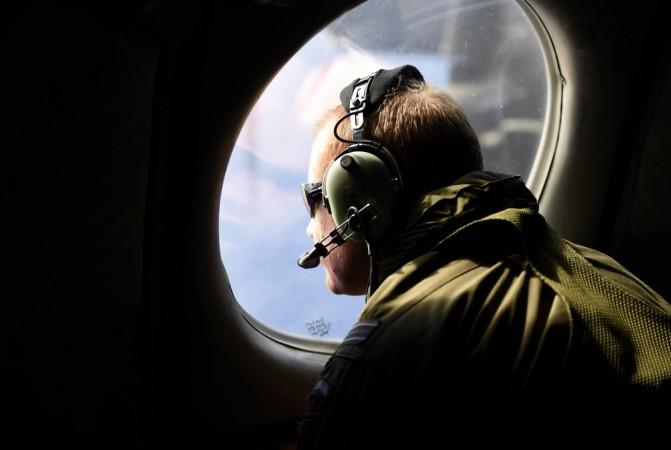
The underwater search for the missing Malaysian Airlines 370 plane came to an end on Tuesday after the victims' families were informed that the search operation for the plane wreckage has been suspended.
The MH370 flight disappeared on March 8, 2014 while flying from Kuala Lumpur International Airport, Malaysia, to Beijing. The flight had 227 passengers on board from 15 nations along with 12 Malaysian crew members. Debris of the plane has been found in various islands mainly from Africa. However, the reason for the crash has not been ascertained yet.
The three countries involved in the search, Malaysia, China and Australia, co-signed the MH370 Tripartite Joint Communiqué on Tuesday which went public in the afternoon. The countries said the search has been called off without any trace of the whereabouts of the wreckage. The search for the plane wreckage went on for more than two years after the incident without any success.
The Joint Agency Coordination Center in Australia said the search has been officially ended after crews completed their unsuccessful search of the 120,000-square kilometer (46,000-square mile) search zone.
"Despite every effort using the best science available ... the search has not been able to locate the aircraft. Accordingly, the underwater search for MH370 has been suspended. The decision to suspend the underwater search has not been taken lightly nor without sadness," Malaysian, Australian and Chinese authorities said in the statement.

Tedious search
The journey to find the missing plane has been tedious, with search zones getting shifted multiple times over the years as investigators refined their analysis based on advanced science. Search crews combed the areas with several ships over two years hoping that small vessels equipped with sonar would send some information back to the boats in real-time. Even unmanned submarines were used to search tougher terrains, but to no avail.
Parts of MH370 plane debris found
Over a year of combing suspected zones, the crew found its first proof in July 2015 that the plane had indeed submerged in the Indian Ocean. A wing flap of the aircraft was found on the Reunion Island, east of Madagascar. Since the incident, more than 20 objects believed to be of the missing plane have surfaced on various beaches throughout the Indian Ocean. Although some parts of the plane were found, search for the main wreckage and even the black box of the plane remain unsuccessful. The objects were found in Reunion Island, Mozambique, Tanzania, Madagascar and Mauritius.

False leads
The investigators have struggled in their operations to find the ill-fated plane. Many a times, hopes of the crew were raised by underwater signals believed to be coming from the plane's black boxes, but the hopes were dashed as debris turned out to be sea trash and oil slicks found to have no traces of jet fuel. Even a large object, thought to be plane wreckage, was detected on a seafloor, which later turned out to be from an old shipwreck.
Decision to suspend search
After years of fruitless search attempts, the three countries which funded the search, Australia, Malaysia and China last year (2016) agreed to end the search once the crew had exhausted combing the last search zone, unless a new striking evidence emerged pinpointing the plane's location.

Victim's families set on search
Frustrated with years of search for the missing Malaysian Airlines flight MH370, the families of the victims in November last year decided to travel to Madagascar, Africa to search for the debris of the plane themselves. Some of the relatives of the MH370 victims had said that they are tired of waiting and decided to take matter into their own hands. The families also complained alleging that there was no systematic search for more wreckage of the plane and some of the possible findings of the wreckage were ignored by the Malaysian government.
The Malaysian government which is responsible for collection of the suspected MH370 debris has sent most of the possible wreckage to Australia for examination. The search parties have found six pieces of confirmed or possible wreckage of the plane so far.

Possibility of a new search
Although the three countries spearheading the search have announced the suspension of the most tedious search in the aviation history, there is still a possibility of a new search. A new search operation could be ensued if a private donor offers to fund the combing or if Malaysia adds more funds to the operations.
The transport bureau in December 2016 had announced that a data review of the estimates of the plane strongly suggested that the plane had hit the waters directly north of the search zone. However, a recommendation to search the new area was rejected by the Australian government citing that the new analysis of the plane's location was not precise enough to continue the hunt for the plane.
No new donor has emerged till now to fund the search operations and considering the families have been informed of the suspension of the search activities of MH370, it appears that the world's greatest aviation mystery will remain unsolved.
(With Reuters and AP inputs)









